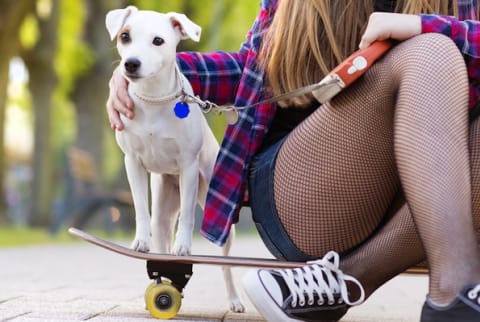Advertisement

Working in a dog mushing kennel has shown me how much "man's best friend" has to teach us about human relationships, and especially how we can better relate to each other. Dogs know a thing or two (or six!) about love...
1. Loving what you do makes it easier to love and be loved.
The sled dogs I work with look beautiful when they run because running is what they love. Running is their strength. They exude confidence, strength and control when harnessed to a sled. Take them out of that context however, say by taking them for a walk in a city park and they cower. They will become wary of all the new people and other dogs and often appear overtly standoffish.
Dogs are most open to getting to know you, to loving you and to being loved, when they are in an environment that makes them comfortable. In that environment, they feel strong and can do what they love. When they are in a positive physical and mental place on their own, they are more inclined to allow us in, to allow themselves to be seen.
2. Body language speaks volumes.
With dogs, body language is everything. You can see the soul of a scared puppy in the eyes of a seemingly vicious, barking dog simply by looking at the angle of its ears or the curve of its tail. Dogs can reveal so much about their emotional state with the way they arch their spine, the position of their head and so on.
Sure, as humans we prioritize language as our primary mode of communication. But it's an important to remember that we, too, send cues (often unconscious ones!) with our body. The way we look at others, whether we put our hands on our hips or in our pockets, or cross are arms -- those are gestures that "speak" loud messages.
3. Always end on a good note.
Each time I discipline a dog, I always end whatever we are doing with praise and a cuddle. This lets the dog know that even though I may have been displeased with them, they are still a loved and valuable member of the team. Concluding our interaction by validating the dog reminds him/her that love can be unconditional, and coexist with other emotions. This is a realistic, sustainable model of love.
I've found this move speaks volumes with people as well. Letting my partner know how much I value him after a minor spat, or even a more significant fight, lessens the tension between us and reassures us of our commitment to each other. People argue, and conflict is inevitable. But it's powerful to remember that you can allow difficult emotions and experiences to exist alongside love.
4. Sometimes you just need some chill out time.
When I teach a dog a new skill, there often come times when one or both of us just need a break. In the case of a relationship, there are rarely experiences of formal instruction or education -- but that doesn't mean there isn't near-constant learning! Each time you interact with a friend, partner or family member, you are learning -- about yourself, the other person, your relationship.
That said, no relationship can withstand constant teaching and learning. Sometimes you just need to have fun together. I try to keep this in mind in romantic relationships as well. Believe it or not: having fun is critical. Love requires fun, plain and simple.
5. Tough love is OK.
At the end of each day, the dogs do have to listen to me. Disciplining them and firmly saying, "No," or even giving them a tap on the nose, isn't mean -- it's direct. For dogs, these actions are the equivalent of telling your partner, "I love you, but you have to listen to what I am trying to say."
In short, tough love is not only OK, but important. There is tremendous power in being direct. I've found that in some of my relationships, I've had to be very blunt about my needs, because otherwise they won't be met. Even though it can seem harsh, it actually reveals a level of commitment and care that isn't there if you communicate passively or not at all.
6. Kisses are a requirement.
For dogs, kissing (licking you) marks a submissive behavior. The more kisses I get from a dog as their handler, the more I know that particular dog respects me as a leader.
As humans, we kiss for many different reasons -- and kissing isn't necessarily submissive. But this one's simple: kisses are important, and make people (and dogs) feel recognized, supported and loved. I don't think many would argue with the phrase, "The more kisses the better!"
Watch Next
Enjoy some of our favorite clips from classes
Enjoy some of our favorite clips from classes
What Is Meditation?
Mindfulness/Spirituality | Light Watkins
Box Breathing
Mindfulness/Spirituality | Gwen Dittmar
What Breathwork Can Address
Mindfulness/Spirituality | Gwen Dittmar
The 8 Limbs of Yoga - What is Asana?
Yoga | Caley Alyssa
Two Standing Postures to Open Up Tight Hips
Yoga | Caley Alyssa
How Plants Can Optimize Athletic Performance
Nutrition | Rich Roll
What to Eat Before a Workout
Nutrition | Rich Roll
How Ayurveda Helps Us Navigate Modern Life
Nutrition | Sahara Rose
Messages About Love & Relationships
Love & Relationships | Esther Perel
Love Languages
Love & Relationships | Esther Perel












